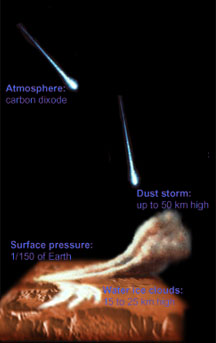This drawing represents several features of the atmosphere on Mars including: dust storms, an atmospheric pressure much lower than found on Earth, and a composition primarily of carbon dioxide.
Click on image for full size
Lower Atmosphere
The atmosphere of Mars is much thinner than that of Earth, with a surface
pressure averaging 1/100th that at the surface of the Earth. Surface
temperatures range from -113oC at the winter pole to 0oC on the dayside
during summer.
Although the length of the Martian day (24 hours and 37
minutes) and the tilt of its axis (25 degrees) are similar to those on Earth (24 hours and 23.5 degrees), the
orbit of the planet about the Sun affects the lengths of the
seasons the most. The atmosphere is composed mainly of carbon dioxide (95.3%),
nitrogen (2.7%), and argon (1.6%), with small amounts of other gases.
Oxygen, which is so important to us on earth, makes up only 0.13% of the
atmosphere at Mars. There is only one-fourth as much water vapor in the
atmosphere.
Although small, this is thought to be enough to allow water
ice to be frozen into the surface of the planet. With so little water, clouds are rarely seen in the Martian sky. The
possible role in the past of liquid water in forming the dry river
beds which we can see is still unknown, particularly because water ice is
not plentiful on the surface of the planet.
You might also be interested in:
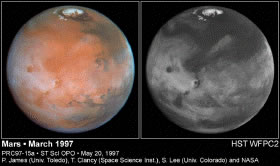
Unlike the Earth, where clouds are found around the entire globe, on Mars, clouds seem to be plentiful only in the equatorial region, as shown in this Hubble telescope image. This may be because water
...more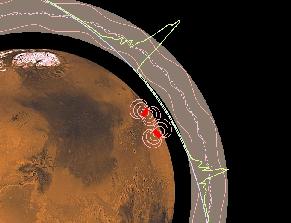
The Martian ionosphere is a layer of gas that is very high up above Mars and is composed of ions and electrons. It extends from about 75 miles up to several hundred miles up above the surface. It is shown
...more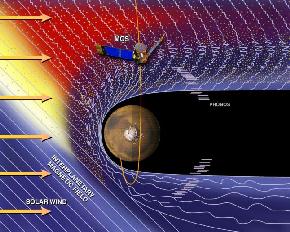
An important new result from the Mars Global Surveyor (MGS) mission is the definite confirmation of the presence of a magnetic field near Mars. The magnetic field leads to the formation of a magnetosphere,
...more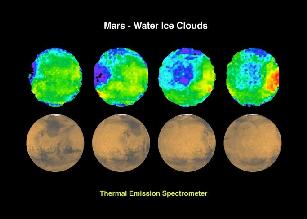
You might think that clouds in the sky have to be made of water like those of Earth, but this is not always so. Clouds might be made of carbon dioxide or ammonia. Just take a peek at the planets Jupiter
...more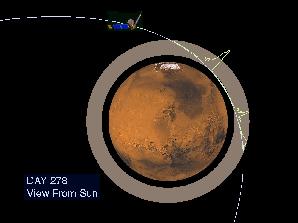
The Mars Global Surveyor reached Mars in September of 1997. But it didn't make it into its final mapping orbit until February 1999. What took so long? Surveyor needed to reach a near-circular, low-altitude
...more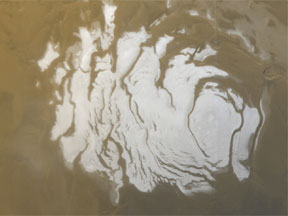
The Mariner 7 spacecraft took the first pictures of the South Pole of Mars. The south polar region is part of the highlands of Mars. The southern highlands of Mars are mostly old, cratered terrain and
...more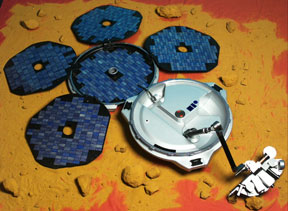
The European Space Agency (ESA) launched a mission to Mars called "Mars Express" in June of 2003. The Mars Express spacecraft has two parts: an orbiter that will circle the Red Planet for at least one
...more


